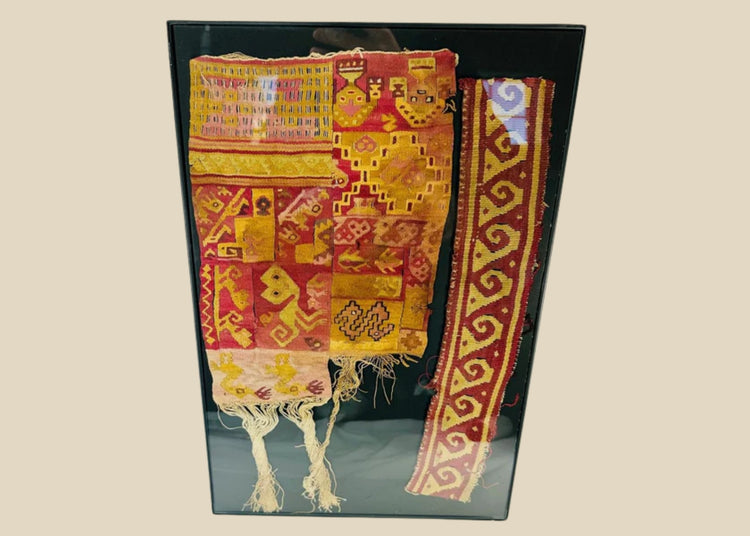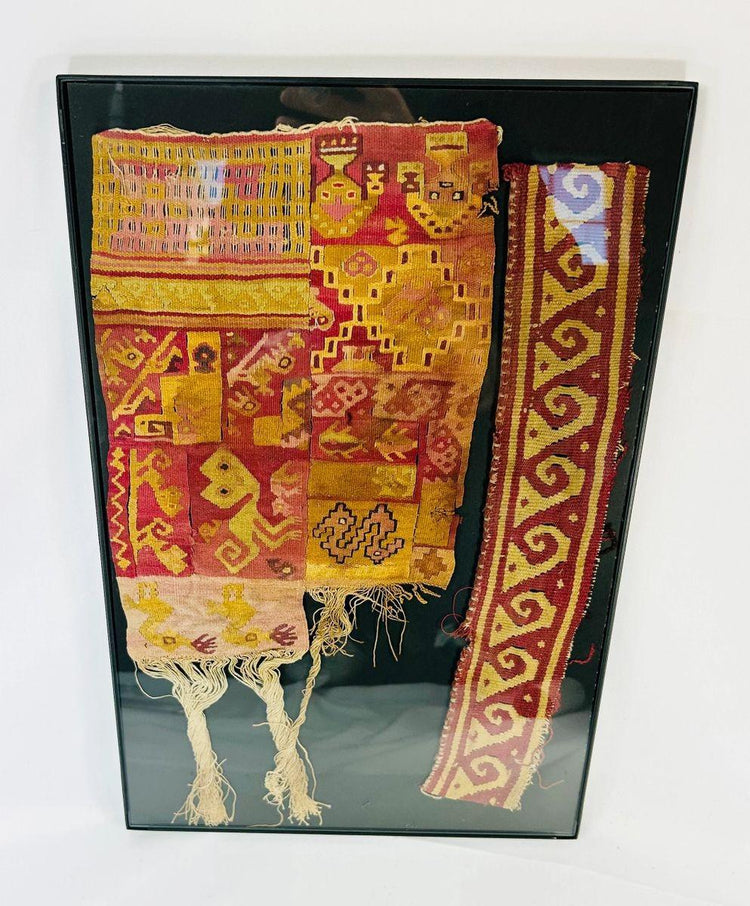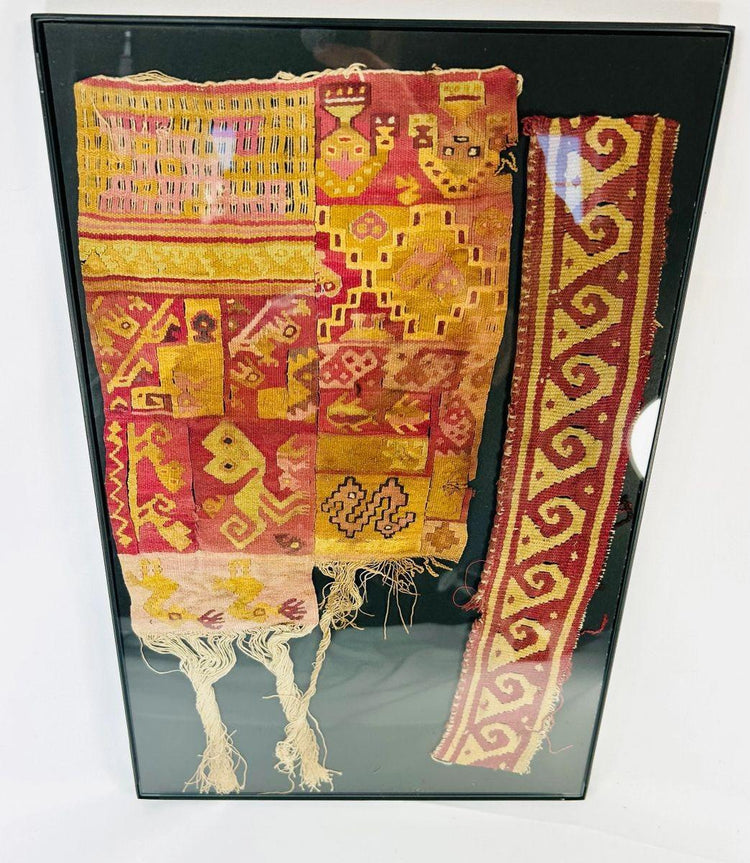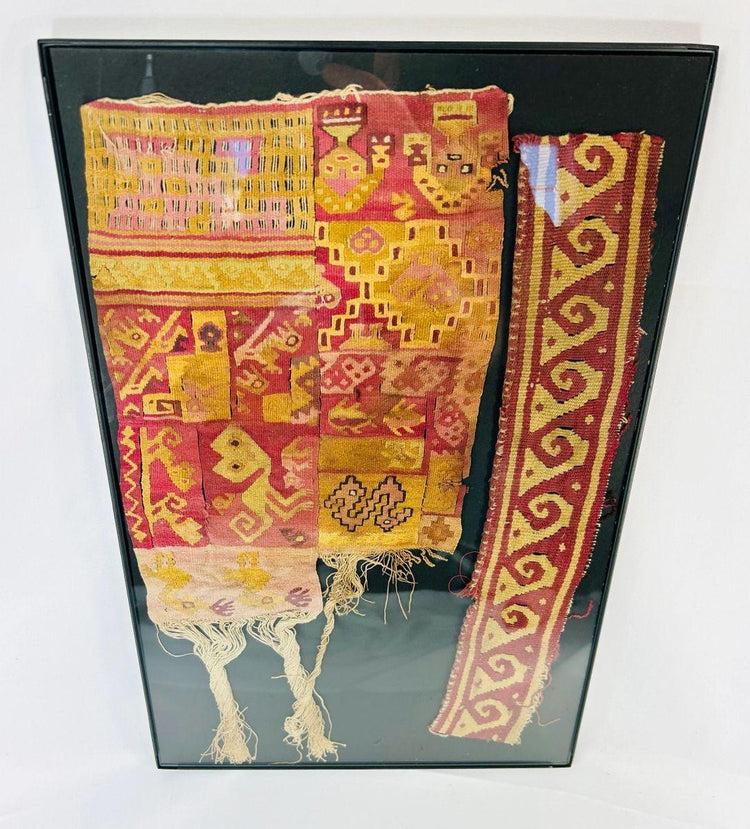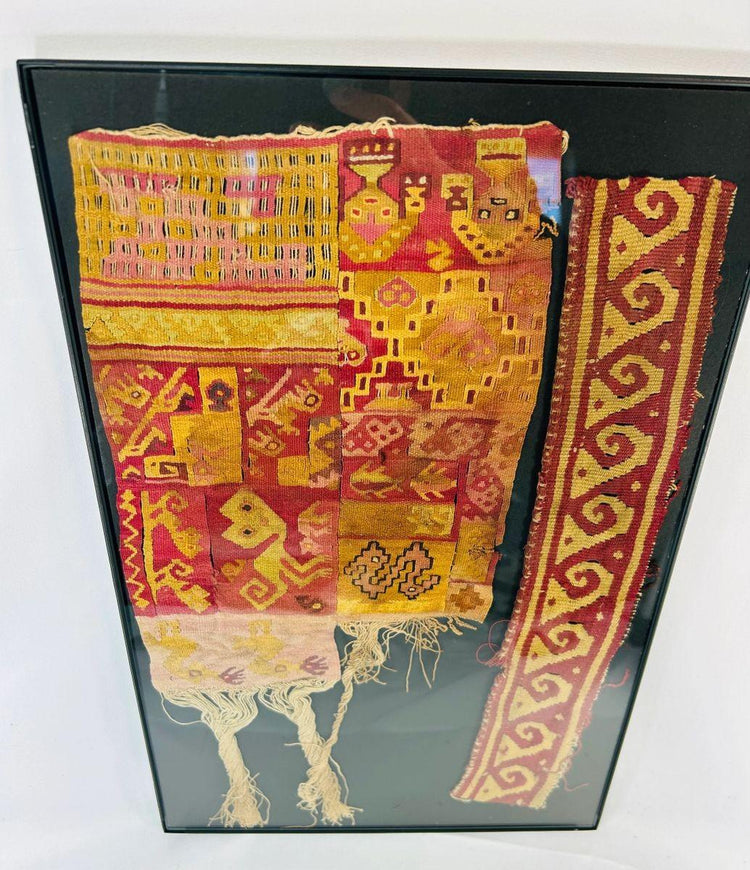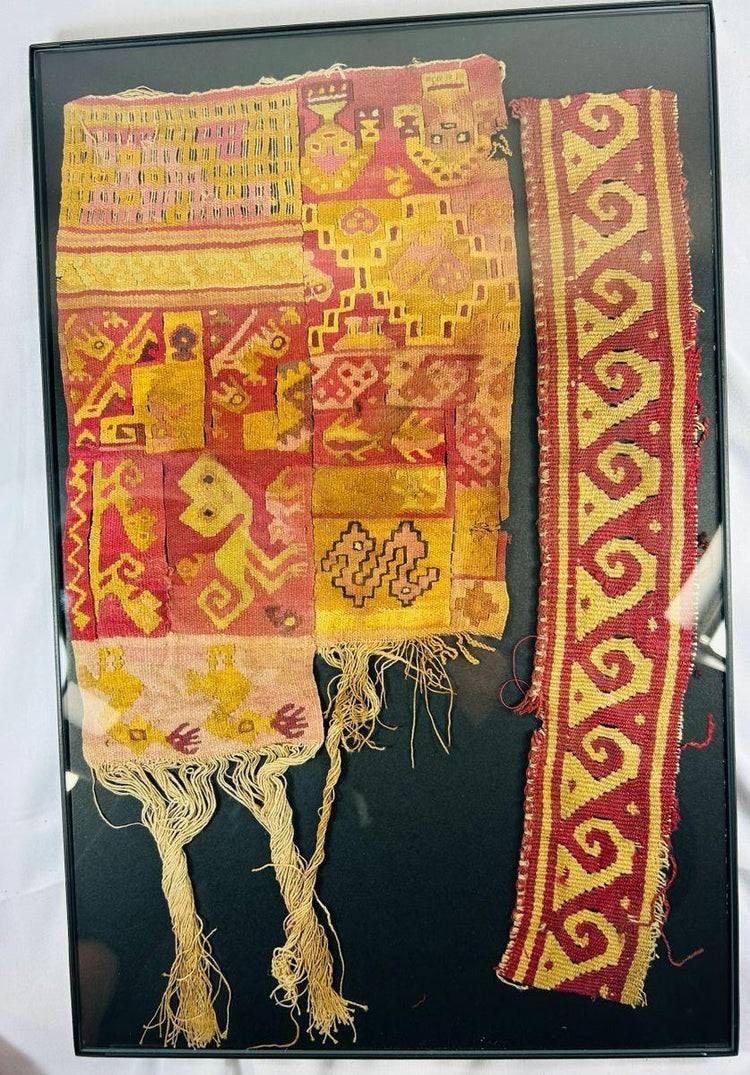Pair of Ancient Peruvian Textiles | Circa 900-1470 CE
Description
More
Less
Historical Context & Origin
Region: Northern Coastal Peru
Material: Finely woven cotton and camelid fibers with natural dyes
Period: Late Intermediate Period, 900–1470 CE
Description
This exceptional set of textile fragments exemplifies the artistry of the Chimu civilization, one of the most advanced pre-Columbian cultures of ancient Peru. The larger fragment is adorned with bold geometric and symbolic patterns in vibrant reds, yellows, and pinks, featuring anthropomorphic figures, stylized animals, and interlocking motifs likely tied to Chimu cosmology. A delicate fringe of twisted fibers remains at the base, indicating its original use in ceremonial garments or ritual textiles. The smaller fragment complements the larger with a continuous swirling border motif in alternating red and yellow, suggesting it may have formed part of a ceremonial tunic, sash, or tapestry. The natural dyes, derived from plants, minerals, and insects, and the fine weaving techniques highlight the mastery of Chimu textile artisans.
Features
- Large fragment decorated with anthropomorphic figures, animals, and geometric motifs
- Smaller fragment with continuous swirling border in red and yellow tones
- Fine weaving in cotton and camelid fibers (alpaca or llama)
- Use of natural pigments producing vibrant, enduring colors
- Remnants of twisted fringe on the larger fragment, indicating ceremonial function
Cultural Significance
The Chimu are renowned for their sophisticated textile production, which was central to religion, ritual, and daily life. Textiles like these were not merely decorative but carried deep symbolic meaning, often serving as ritual offerings or funerary goods. The motifs on the larger fragment likely represented deities or elements of Chimu cosmology, connecting the material world with the spiritual. These pieces provide a tangible link to the cultural and ceremonial traditions of one of ancient Peru’s most influential societies.
Condition
The fragments survive in remarkable condition for their age, with the colors remaining vibrant despite centuries of age. Minor wear, fraying, and surface softening are present, consistent with archaeological textiles, but both pieces retain their intricate details and weaving integrity. Their preservation ensures continued value as both cultural artifacts and works of art.
Dimensions (approximate)
Frame:
Height: 17 in
Width: 11 in
Age
Over 500 years old
Description
Historical Context & Origin
Region: Northern Coastal Peru
Material: Finely woven cotton and camelid fibers with natural dyes
Period: Late Intermediate Period, 900–1470 CE
Description
This exceptional set of textile fragments exemplifies the artistry of the Chimu civilization, one of the most advanced pre-Columbian cultures of ancient Peru. The larger fragment is adorned with bold geometric and symbolic patterns in vibrant reds, yellows, and pinks, featuring anthropomorphic figures, stylized animals, and interlocking motifs likely tied to Chimu cosmology. A delicate fringe of twisted fibers remains at the base, indicating its original use in ceremonial garments or ritual textiles. The smaller fragment complements the larger with a continuous swirling border motif in alternating red and yellow, suggesting it may have formed part of a ceremonial tunic, sash, or tapestry. The natural dyes, derived from plants, minerals, and insects, and the fine weaving techniques highlight the mastery of Chimu textile artisans.
Features
- Large fragment decorated with anthropomorphic figures, animals, and geometric motifs
- Smaller fragment with continuous swirling border in red and yellow tones
- Fine weaving in cotton and camelid fibers (alpaca or llama)
- Use of natural pigments producing vibrant, enduring colors
- Remnants of twisted fringe on the larger fragment, indicating ceremonial function
Cultural Significance
The Chimu are renowned for their sophisticated textile production, which was central to religion, ritual, and daily life. Textiles like these were not merely decorative but carried deep symbolic meaning, often serving as ritual offerings or funerary goods. The motifs on the larger fragment likely represented deities or elements of Chimu cosmology, connecting the material world with the spiritual. These pieces provide a tangible link to the cultural and ceremonial traditions of one of ancient Peru’s most influential societies.
Condition
The fragments survive in remarkable condition for their age, with the colors remaining vibrant despite centuries of age. Minor wear, fraying, and surface softening are present, consistent with archaeological textiles, but both pieces retain their intricate details and weaving integrity. Their preservation ensures continued value as both cultural artifacts and works of art.
Dimensions (approximate)
Frame:
Height: 17 in
Width: 11 in
Age
Over 500 years old
You May Also Like
















